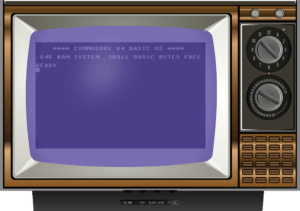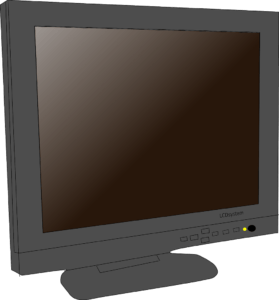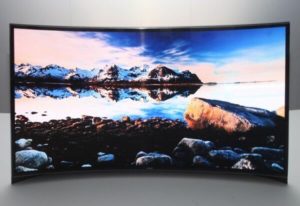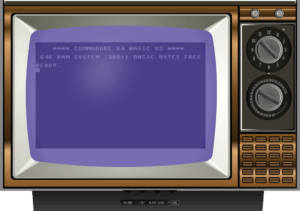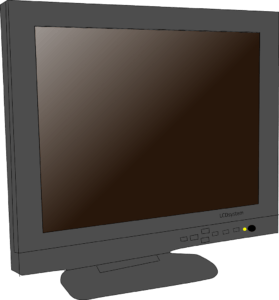What is an LCD, LED, OLED, AMOLED, ELD, CRT, QD screens? What is the difference between LCD, LED, OLED, AMOLED, ELD, CRT, QD screens? | LCD, LED, OLED, AMOLED, ELD, CRT, QD स्क्रीन्स क्या है? LCD, LED, OLED, AMOLED, ELD, CRT, QD स्क्रीन्स में क्या अंतर है?

- What is an LCD, LED, OLED, AMOLED, ELD, CRT, QD screens?
- What is the difference between LCD, LED, OLED, AMOLED, ELD, CRT, QD screens?
- Difference between LCD, LED, AMOLED, ELD, CRT, Super AMOLED, OLED, QD, Flat Panel, Plasma Display?
- LCD, LED, OLED, AMOLED, ELD, CRT, QD स्क्रीन्स क्या है?
- LCD, LED, OLED, AMOLED, ELD, CRT, QD स्क्रीन्स में क्या अंतर है?
- Difference between LCD, LED, AMOLED, ELD, CRT, Super AMOLED, OLED, QD, Flat Panel, Plasma Display?
What are LCD, LED, OLED, AMOLED, ELD, CRT, QD screens? What is the difference between LCD, LED, OLED, AMOLED, ELD, CRT, QD screens?
So let’s know about these screens
Friends now come to the electronic screens that we use on our television, smartphone, computer or tablet every day
So let’s know about those screens
The cathode-ray tube contains many basic components, known as electron guns. CRT has three electron guns which are Red, Green, and Blue. All of these guns flow left to right electrons on the lines of the monitor screens. As the electrons hit the phosphor, the electron glows rapidly and as soon as the new line starts, the electron guns start moving left to right. These electron guns sometimes repeat this process thousands of times and it keeps repeating until the lines are completely drawn on the screen. It modulates, accelerates, and deflects the electron beam on the screen to create an image. These images can be electrical waveforms, pictures, or radar targets. In such a situation, it can be understood that the cathode ray tube has a big role in displaying images-pictures, text, or videos on any screen.
2. Flat Panel Display
The flat panel display is a television, monitor, or display tool that uses a thin panel design instead of the traditional cathode ray tube (CRT) design. These screens are very light and thin and are much more portable than traditional televisions and monitors. It also has higher resolutions than older models.
A flat panel display is a very thin display screen of a computer, tablet, mobile phone, or television. It was first invented in 1964.
To understand it another way, one can say that “Flat panel display is a display technology in which thin panel is used.”
The flat panel display uses LCD (liquid crystal display) and LED (light-emitting diode) screens, which is why it is very light and thin.
Being light and thin, these screens are very portable and we can easily take it anywhere. Earlier TV and monitor screens used cathode ray tubes (CRTs). Because of this, they were not portable before.
The flat panel display’s infrastructure is very simple and small, it helps to make the screen light and portable. Apart from using these screens personally, they are very much used in business activities.
3. Plasma Display Panel
Friends, a plasma display panel (PDP) is a type of flat panel display that uses a small cell with plasma, ionized gas that responds to electric fields. Earlier plasma displays were generally used in TVs with screens larger than 30 inches. But, now over a decade, they have lost almost all their market share by competing with low-cost LCD and more expensive high contrast OLED flat panel displays. Because of this, all companies stopped manufacturing plasma display panels for retail markets in the US and Chinese markets in 2014. Due to this, they all stopped meeting in almost all countries.
4. Electroluminescent Display (ELD)
Electroluminescent display (ELD) is a screen that uses electroluminescence. Electroluminescence (EL) is an optical and electrical phenomenon that is a range of flat panel displays made by sandwiching a thin film of electroluminescent material between two plates. Electroluminescent display or ELD display uses the phenomena of electroluminescence. Electroluminescent displays are not commonly used as other display types, they are used in industrial, instrumentation, and transportation applications. Electroluminescent devices are similar in many ways to capacitors. The only difference between this is that of the phosphor layer, which is used in electroluminescent displays.
Electroluminescent displays are made with the help of opaque electrode strips, which are placed parallel to each other and covered with a layer of phosphorus-like electroluminescent material.
Basically, electroluminescence works with the help of exiting atoms by passing an electric current through them, allowing them to exclude photons and changing the color of the light being excreted as the material separates. The actual ELD is constructed using flat, opaque electrode strips running parallel to each other, covered with a layer of electroluminescent material.
Alternative current is typically used in the operation of an electroluminescent display. The main feature of the electroluminescent display or ELD display is that it displays a wide-angle on the screen as well as clear and sharp images.
5. Liquid Crystal Display (LCD)
Friends, a liquid crystal display (LCD) is a type of display technology that uses a liquid crystal that opens or closes when it is excited by electric current. These liquid crystals operate based on LCD technology.
LCD is considered a major innovation for display devices and is often used in mainstream electronics such as microwave ovens, laptop computers, smartphones, and TVs. LCD technology is preferred over other display technologies, as it consumes very light and thin as well as less power.
Liquid crystal technology essentially began in 1888, when Frederick Renitzer discovered the crystalline nature of cholesterol extracted from carrots. In 1972, the first active-matrix liquid crystal display panel was produced by Westinghouse in Pittsburgh, and by 2008, LCD televisions were offered throughout the world, along with fully replacing the cathode ray tube model. Were going
Friends, liquid crystal complexes are made of molecules. Just like water. As water changes its state from solid to liquid according to temperature. When molecules move around in the liquid state, there is a possibility to create lines in a certain direction, allowing them to reflect light. The crystals are arranged in a matrix, in which crystals of three colors are found, which are of red, green, and blue colors, known as a pixel. Arrange in the form of rows or columns by creating groups of numbers, numbers, letters, or any shape. Polarized light is allowed or blocked, as liquid crystals are individually on and off. The LCD display runs more efficient-energy and is considered much safer than CRT.
6. Light-Emitting Diode (LED)
LED display (light-emitting diode display) or light-emitting diode is a screen display technology that uses LED panels as a light source. Nowadays, a large number of electronic devices are all used as small and large screens, in the form of interaction between users and the system, using an LED display. Modern electronic devices such as mobile phones, TVs, tablets, computer monitors, laptop screens, etc., use LED displays to display their output.
The LED display is one of the main screen displays that are being used commercially. The biggest advantage of LED display is that it consumes efficacious and low-energy, which is important for handheld and chargeable devices such as especial mobile phones and tablets. An LED display consists of several LED panels, which are made up of several LEDs. LEDs have many advantages over the light source, which can be used alternatively. Apart from having efficient power, it produces maximum light intensity. The LED display differs from the vacuum fluorescent display used in some consumer electronics, such as car stereos, videocassette recorders, etc., and, therefore, should not be confused between them.
LED displays may use general illumination or general illumination in addition to visual displays, such as stage lighting or any decoration. Many large corporation companies like Apple, Samsung, and LG now want to produce MicroLED display. These displays are easily scalable and help in making the production process better established. Therefore LED display or LED devices are considered a good light display source.
7. Organic Light-Emitting Diode (OLED)
An organic light-emitting diode (OLED) is a solid-state light device that uses flat light emitting technology with the help of two conductors. Between which a series of organic thin films are made. Like other display modes, OLED does not require backlighting. Because of its low power consumption and good brightness, OLED is used as a backlight source for LCD display, electronic devices, and signaling as well as general lighting.
An organic light-emitting diode (OLED), also known as organic EL (organic electroluminescent) diode, as a light-emitting diode (LED), where the emissive electroluminescent layer is a film of the organic element, which The light responds to the electric current.
The organic layer is in between two electrodes, at least one of which is a transparent agent. OLED is used to create digital displays in devices such as television screens, computer monitors, portable systems such as smartphones, handheld game consoles, and digital assistants. Typically, an OLED display works without a backlight because it ejects the visible light. This means that it can display deep black layers and is much thinner and lighter than a liquid crystal display (LCD). In a low ambient condition or in a dark room, OLED screens can capture higher contrast ratios than LCDs, even if the LCD uses an LED backlight or cold cathode fluorescent lamp.
8. Active-Matrix Organic Light-Emitting Diode (AMOLED)
Active Matrix Organic Light-Emitting Diode (AMOLED) is a light-emitting and thin-film display technology, in which electroluminescent organic compounds are mounted on a base layer. It consumes less electric power and does not require a backlight. It is used as portable electronic devices, battery-powered devices, and large displays.
AMOLED consists of a thin-film transistor, which is used to control pixels. These consist of complete layers of organic molecules, anodes, and cathodes. This thin-film transistor array determines the pixels by activating images.
There are many advantages to using AMOLED display screens. Compared to other display technologies, AMOLED has a higher contrast ratio and faster response time. It is lightweight as well as containers good flexibility and low temperature. Its production cost is much less than the screens of other technologies and it displays a better wide range of colors compared to LCD.
AMOLED is used as display device technologies in smartwatches, mobile devices, laptops, televisions, media players, and digital cameras. The AMOLED display is only a part of the OLED display, but it provides some better display than OLED.
9. Super AMOLED
The Super AMOLED is a kind of AMOLED display, but it is designed for marketing purposes by leading device manufacturers. It is used to denote the AMOLED display, which comes with an integrated digitizer, that is, which detects the touch of the layer, it is integrated on the display screen. The Samsung company said that the Super AMOLED display reflects better sunlight than the AMOLED display. The Super AMOLED display is part of the Pentile Matrix Family, also known as SAMOLED. This means that it includes Super AMOLED Advanced, Super AMOLED Plus, HD Super AMOLED, HD Super AMOLED Plus, and Full HD Super AMOLED.
10. Quantum Dot (QD)
A quantum dot display is a display device that uses quantum dots (QDs). It is a type of atomic/molecular structure that is “nanocrystals” made of nanoscale or silicon and semiconductor materials. Basically, semiconductor nanocrystals can display pure monochromatic red, green, and blue light.
Photo-abrasive quantum dot particles are used in the QD layer, which converts the backlight to flush out all the basic colors that display brightness and color scale by reducing light loss and color crosstalk in RGB color filters. Enhances This technology is used in LED-backlit LCDs, although it is also applicable to other display technologies, such as white or blue / UV OLED.
कैथोड-रे ट्यूब में बहुत सारे बेसिक कंपोनेंट्स होते हैं, जिन्हें इलेक्ट्रान गन कहा जाता है। CRT में तीन इलेक्ट्रान गन्स हैं जो कि Red, Green और Blue होते हैं। इन में से सभी गन्स मॉनिटर स्क्रीन्स के लाइन्स पर लेफ्ट टू राइट इलेक्ट्रॉन्स को फ्लो करती है। जैसे ही इलेक्ट्रान फॉस्फोर से टकराते हैं तो इलेक्ट्रान तेजी से ग्लो करता है और जैसे ही नयी लाइन शुरू होती है तो फिर से इलेक्ट्रान गन्स लेफ्ट टू राइट मूव करने लगती है। ये इलेक्ट्रान गन्स कभी कभी इस प्रोसेस को हजारों बार रिपीट करती है और ये तब तक रिपीट करती रहती है जब तक की लाइन्स पूरी तरह से स्क्रीन पर ड्रॉ नहीं हो जाती। यह इमेज बनाने के लिए स्क्रीन पर इलेक्ट्रॉन बीम को मॉड्यूलेट, एक्सील्यूट और डिफ्लेक्ट करता है। ये इमेज इलेक्ट्रिकल वेवफॉर्म्स, पिक्चर्स या रेडार टार्गेट्स हो सकते हैं। ऐसे में ओवरऑल देखा जाए तो यह समझा जा सकता है कि किसी भी स्क्रीन पर इमेजेज-पिक्चर्स, टेक्स्ट या फिर वीडियोस को डिस्प्ले कराने में कैथोड रे ट्यूब का बहुत बड़ा रोल होता है।
2. फ्लैट पैनल डिस्प्ले
फ्लैट पैनल डिस्प्ले एक टेलीविजन, मॉनिटर या डिस्प्ले टूल है जो ट्रेडिशनल कैथोड रे ट्यूब (सीआरटी) डिजाइन के बजाय पतले पैनल डिजाइन का उपयोग करता है। ये स्क्रीन बहुत हल्का और पतला होता है और ट्रेडिशनल टेलीविजन और मॉनिटर की तुलना में बहुत ही ज्यादा पोर्टेबल होता है। इसमें पुराने मॉडल्स की तुलना में ज्यादा रेसोलुशन भी होते हैं।
फ्लैट पैनल डिस्प्ले, कंप्यूटर, टेबलेट, मोबाइल फ़ोन या टेलीविज़न की एक बहुत ही पतली डिस्प्ले स्क्रीन होती है। इसे सबसे पहले 1964 में इंवेंट किया गया था.
दूसरी तरह से इसे समझने के लिए यह कह सकते हैं कि “फ्लैट पैनल डिस्प्ले एक डिस्प्ले टेक्नोलॉजी होती है जिसमें पतले पैनल का प्रयोग किया जाता है।”
फ्लैट पैनल डिस्प्ले एलसीडी (लिक्विड क्रिस्टल डिस्प्ले) और एलईडी (प्रकाश उत्सर्जक डायोड) स्क्रीन्स को यूज़ करता है, इसी वजह से यह बहुत ही हलकी और पतली होती है।
हलकी और पतली होने की वजह से ये स्क्रीन बहुत ही पोर्टेबल होती है और इसे हम आसानी से कहीं भी ले जा सकते हैं। पहले के टीवी और मॉनिटर स्क्रीन्स में कैथोड रे ट्यूब (CRT) को यूज़ किया जाता था। इस वजह से पहले ये पोर्टेबल नहीं होते थे।
फ्लैट पैनल डिस्प्ले का इंफ्रास्ट्रक्चर बहुत ही सिंपल और छोटा होने के कारण यह स्क्रीन को हल्का और पोर्टेबल बनाने में मदद करता है। इन स्क्रीन्स को पर्सनली यूज़ करने के आलावा इन्हें बिज़नेस एक्टिविटीज में बहुत ही ज्यादा यूज़ किया जाता है।
3. प्लाज्मा डिस्प्ले पैनल
दोस्तों, प्लाज्मा डिस्प्ले पैनल (पीडीपी) एक प्रकार का फ्लैट पैनल डिस्प्ले होता है जिसमें प्लाज्मा, आयनित गैस वाले छोटे सेल का उपयोग किया जाता है जो इलेक्ट्रिक फ़ील्ड्स में रेस्पॉन्स करता है। इससे पहले प्लाज्मा डिस्प्ले को आम तौर पर 30 इंच से बड़े स्क्रीन्स वाले TV में यूज़ किये जाते थे। लेकिन, अब एक दशक के बाद से उन्होंने कम लागत वाले एलसीडी और मोर एक्सपेंसिव हाई कंट्रास्ट OLED फ्लैट पैनल डिस्प्ले से कम्पटीशन कर के लगभग सभी मार्केट शेयर को खो दिए हैं। इस वजह से सभी कंपनियों ने 2014 में अमेरिका के रिटेल मार्किट और चीनी मार्किट के लिए प्लाज्मा डिस्प्ले पैनल को मनुफैक्टर करना बंद कर दिया। जिससे यह सभी लगभग सभी देशों में मिलने बंद हो गए।
4. इलेक्ट्रोल्यूमिनसेंट डिस्प्ले (ELD)
इलेक्ट्रोल्यूमिनसेंट डिस्प्ले (ईएलडी) ऐसी स्क्रीन है जो इलेक्ट्रोल्यूमिनसेंस का उपयोग करती है। इलेक्ट्रोल्यूमिनसेंस (EL) एक ऑप्टिकल और इलेक्ट्रिकल फेनोमेना है जो दो प्लेटों के बिच इलेक्ट्रोल्यूमिनसेंट मटेरियल की एक पतली फिल्म को सैंडविच करके बनाए गए फ्लैट पैनल डिस्प्ले की एक केटेगरी होती है। इलेक्ट्रोल्यूमिनसेंट डिस्प्ले या ELD डिस्प्ले, इलेक्ट्रोल्यूमिनिसेंस की फेनोमेना को यूज़ करता है। इलेक्ट्रोल्यूमिनसेंट डिस्प्ले आमतौर पर दूसरी डिस्प्ले टाइप्स के रूप में यूज़ नहीं किए जाते हैं, इनको इंडस्ट्रियल, इंस्ट्रूमेंटेशन और ट्रांसपोर्टेशन ऍप्लिकेशन्स में यूज़ किया जाता है। इलेक्ट्रोल्यूमिनसेंट डिवाइसेस, कई मायनों में कैपेसिटर के समान होता है। इसके बीच एकमात्र डिफरेंस फॉस्फोर लेयर का होता है, जिसका उपयोग इलेक्ट्रोल्यूमिनसेंट डिस्प्ले में किया जाता है।
इलेक्ट्रोल्यूमिनसेंट डिस्प्ले को अपारदर्शी इलेक्ट्रोड स्ट्रिप्स की मदद से बनाया जाता है, जो एक दूसरे के पैरेलल रखे जाते हैं और फॉस्फोरस जैसी इलेक्ट्रोल्यूमिंसेंट मैटेरियल की एक लेयर से ढंके रहते हैं।
मूल रूप से, इलेक्ट्रोल्यूमिनिसेंस उनके माध्यम से इलेक्ट्रिक करंट पारित करके एक्ससिटिंग एटम्स की मदद से काम करता है, जिससे वे फोटॉन को बाहर करते हैं और मैटेरियल के अलग-अलग होने से एक्ससिटेड होने वाले लाइट के कलर चेंज हो जाते हैं। एक्चुअल ईएलडी को एक दूसरे के पैरेलल चलने वाले फ्लैट, अपारदर्शी इलेक्ट्रोड स्ट्रिप्स को यूज़ करके बनाया गया है, जो इलेक्ट्रोल्यूमिनसेंट मटेरिअल की एक लेयर की मदद से इसे कवर किया गया है।
अल्टरनेटिव करंट का यूज़ आम तौर पर एक इलेक्ट्रोल्यूमिनसेंट डिस्प्ले के ऑपरेशन में किया जाता है। इलेक्ट्रोल्यूमिनसेंट डिस्प्ले या ELD डिस्प्ले की मुख्य फीचर यह है कि यह स्क्रीन पर वाइड एंगल के साथ साथ क्लियर और शार्प इमेज को भी डिस्प्ले करता है।
5. लिक्विड क्रिस्टल डिस्प्ले (LCD)
दोस्तों, लिक्विड क्रिस्टल डिस्प्ले (एलसीडी) एक प्रकार की डिस्प्ले टेक्नोलॉजी है जो इलेक्ट्रिक करंट से एक्ससिटेड होने पर खुलने या बंद होने वाले लिक्विड क्रिस्टल का यूज़ करती है। ये लिक्विड क्रिस्टल एलसीडी टेक्नोलॉजी के बेस पर काम करते हैं।
एलसीडी को डिस्प्ले डिवाइसेस के लिए मेजर इनोवेशन माना जाता है और अक्सर माइक्रोवेव ओवन, लैपटॉप कंप्यूटर, स्मार्टफोन और टीवी जैसे मेनस्ट्रीम इलेक्ट्रॉनिक्स में इसे यूज़ किया जाता है। एलसीडी टेक्नोलॉजी को दूसरे डिस्प्ले टेक्नोलॉजीज के लिए पसंद किया जाता है, क्योंकि यह बहुत ही हल्का और पतला होने के साथ साथ लेस्स पावर कंज्यूम करता है।
लिक्विड क्रिस्टल टेक्नोलॉजी एसेंशियल रूप से 1888 में शुरू हुई, जब फ्रेडरिक रेनित्जर ने गाजर से निकाले गए कोलेस्ट्रॉल की क्रिस्टलाइन नेचर कि खोज की। साल 1972 में पहले एक्टिव-मैट्रिक्स लिक्विड क्रिस्टल डिस्प्ले पैनल को वेस्टिंगहाउस के द्वारा पिट्सबर्ग में प्रोडूस किया गया था और 2008 तक, एलसीडी टीवी को पुरे वर्ल्ड में प्रोवाइड कर दिए गए थे और इसके साथ साथ कैथोड रे ट्यूब मॉडल को पूरी तरह से रिप्लेस किये जा रहे थे।
दोस्तों, लिक्विड क्रिस्टल काम्प्लेक्स मोलेक्युल्स से बने होते हैं। बिलकुल पानी की तरह। जैसे कि पानी अपने स्टेट को सॉलिड से लिक्विड में टेम्परेचर के अनुसार बदलता है। जब मोलेक्युल्स लिक्विड स्टेट में चारों ओर घूमते हैं तो एक सर्टेन डायरेक्शन में लाइन्स बनाने की संभावना होती है, जिससे वे लाइट को रिफ्लेक्ट कर सकते हैं। क्रिस्टल को एक मैट्रिक्स में अर्रंगे किया जाता है, जिसमें तीन रंगों के क्रिस्टल पाए जाते हैं, जो कि रेड, ग्रीन और ब्लू कलर के होते हैं, जिन्हें एक पिक्सेल के रूप में जाना जाता है। पिक्सल के ग्रुप, नंबर्स, लेटर्स या कोई शेप बना कर रो या कॉलम के फॉर्म में अरैंज करते हैं। ध्रुवीकृत प्रकाश को अनुमति दी जाती है या अवरुद्ध किया जाता है, क्योंकि तरल क्रिस्टल व्यक्तिगत रूप से चालू और बंद होते हैं। एलसीडी डिस्प्ले ज्यादा कुशल-एनर्जी के साथ चलता है और इसे CRT की तुलना में काफी सुरक्षित माना जाता है।
6. लाइट एमिटिंग डायोड (LED)
एलईडी डिस्प्ले (प्रकाश उत्सर्जक डायोड डिस्प्ले) या लाइट एमिटिंग डायोड, एक स्क्रीन डिस्प्ले टेक्नोलॉजी है जो लाइट सोर्स के रूप में एलईडी के पैनल का यूज़ करती है। आजकल बड़ी संख्या में इलेक्ट्रॉनिक डिवाइसेस को सभी छोटे और बड़े स्क्रीन के रूप में यूजर्स और सिस्टम के बीच इंटरेक्शन के फॉर्म में एलईडी डिस्प्ले को यूज़ करते हैं। मॉडर्न इलेक्ट्रॉनिक डिवाइसेस जैसे मोबाइल फोन, टीवी, टैबलेट, कंप्यूटर मॉनिटर, लैपटॉप स्क्रीन आदि, अपने आउटपुट को डिस्प्ले करने के लिए एलईडी डिस्प्ले को यूज़ करते हैं।
एलईडी डिस्प्ले मेन स्क्रीन डिस्प्ले में से एक है, जिसे कमर्सिअली यूज़ किया जा रहा है। एलईडी डिस्प्ले का सबसे बड़ा फायदा ये है कि यह एफ्फिसिएंट और लो-एनर्जी खपत करती है, जो एस्पेशल्ली मोबाइल फोन और टैबलेट जैसे हैंडहेल्ड और चार्जेबल डिवाइसेस के लिए इम्पोर्टेन्ट है। एक एलईडी डिस्प्ले में कई एलईडी पैनल होते हैं, जो कई एलईडी से मिलकर बने होते हैं। एल ई डी का लाइट सोर्स तौर पर बहुत सारे फायदे हैं, जो अल्टरनेटिव रूप से यूज़ किए जा सकते हैं। इसमें एफ्फिसिएंट पावर होने के अलावा, यह अधिक से अधिक लाइट इन्टेन्सिटी को प्रोड्यूस करता है। एलईडी डिस्प्ले कुछ कंस्यूमर इलेक्ट्रॉनिक्स में उपयोग किए जाने वाले वैक्यूम फ्लोरोसेंट डिस्प्ले से डिफरेंट होता है, जैसे कि कार स्टीरियो, वीडियोकैसेट रिकॉर्डर, आदि, और, इसलिए, इनके बिच कन्फूशन नहीं होना चाहिए।
एलईडी डिस्प्ले विसुअल डिस्प्ले के अलावा जनरल इल्लुमिनेशन या सामान्य रोशनी, जैसे कि स्टेज लाइटिंग या कोई डेकोरेशन के रूप में यूज़ कर सकते हैं। ऐप्पल, सैमसंग और एलजी जैसे कई बड़े कारपोरेशन कम्पनीज अब माइक्रोएलईडी डिस्प्ले को प्रोड्यूस करना चाहते हैं। ये डिस्प्ले आसानी से स्केलेबल हैं और प्रोडक्शन प्रोसेस को अधिक वेल एस्टैब्लिस्ड बनाने में मदद करते हैं। इसलिए LED डिस्प्ले या LED डिवाइसेस एक अच्छा लाइट डिस्प्ले सोर्स माना जाता है।
7. ऑर्गेनिक लाइट एमिटिंग डायोड (OLED)
ऑर्गेनिक लाइट-एमिटिंग डायोड (OLED) एक सॉलिड-स्टेट लाइट डिवाइस है जो दो कंडक्टर की मदद से फ्लैट लाइट एमिटिंग टेक्नोलॉजी का इस्तेमाल करता है. जिसके बीच ऑर्गेनिक थिन फिल्म की एक सीरीज बनी होती है। दूसरे डिस्प्ले मोड की तरह OLED को बैकलाइटिंग की आवश्यकता नहीं होती है। इसकी लो पावर कंसम्पशन और अच्छी ब्राइटनेस की वजह से , OLED को एलसीडी डिस्प्ले, इलेक्ट्रॉनिक डिवाइसेस और सिग्नलिंग के साथ-साथ जनरल लाइटिंग के तौर पर बैकलाइट सोर्स के रूप में यूज़ किया जाता है।
ऑर्गेनिक लाइट-एमिटिंग डायोड (OLED), जिसे ऑर्गेनिक ईएल (ऑर्गेनिक इलेक्ट्रोल्यूमिनसेंट) डायोड भी कहा जाता है, जो कि लाइट-एमिटिंग डायोड (LED) के रूप में होता है, जहां एमिसेक्टिव इलेक्ट्रोल्यूमिनसेंट लेयर ऑर्गेनिक एलीमेंट की एक फिल्म होती है, जो लाइट को इलेक्ट्रिक करंट के लिए रिस्पांस देती है।
ऑर्गेनिक लेयर दो इलेक्ट्रोड के बीच में होती है, जिसमें से कम से कम एक ट्रांसपेरेंट होती है। OLED का यूज़ टेलीविजन स्क्रीन, कंप्यूटर मॉनिटर, पोर्टेबल सिस्टम जैसे स्मार्टफोन, हैंडहेल्ड गेम कंसोल और डिजिटल असिस्टेंट जैसे डिवाइसेस में डिजिटल डिस्प्ले बनाने के लिए किया जाता है। आमतौर पर, एक OLED डिस्प्ले बैकलाइट के बिना काम करता है क्योंकि यह विज़िबल लाइट को बाहर निकालता है। इसका मतलब है कि यह डीप ब्लैक लेयर्स को डिस्प्ले कर सकता है और यह लिक्विड क्रिस्टल डिस्प्ले (एलसीडी) की तुलना में ज्यादा पतला और हल्का होता है। लो एम्बिएंट कंडीशन या किसी डार्क रूम में, OLED स्क्रीन एलसीडी की तुलना में हाई कंट्रास्ट रेश्यो ऑब्टेन कर सकती है, भले ही एलसीडी एक एलईडी बैकलाइट या कोल्ड कैथोड फ्लोरोसेंट लैंप को यूज़ करती हो।
8. एक्टिव मैट्रिक्स ऑर्गेनिक लाइट एमिटिंग डायोड (AMOLED)
एक्टिव मैट्रिक्स ऑर्गेनिक लाइट एमिटिंग डायोड (AMOLED) एक लाइट एमिटिंग और थिन-फिल्म डिस्प्ले टेक्नोलॉजी है, जिसमें इलेक्ट्रोल्यूमिनसेंट ऑर्गेनिक कंपाउंड्स को एक आधार लेयर पर रखा जाता है। यह लेस्स इलेक्ट्रिक पावर कंज्यूम करता है और इसमें बैकलाइट की जरुरत नहीं होती है। यह पोर्टेबल इलेक्ट्रॉनिक डिवाइसेस, बैटरी पावर्ड डिवाइसेस और लार्ज डिस्प्ले के रूप में यूज़ किया जाता है।
AMOLED में एक थिन-फिल्म ट्रांजिस्टर होता है, जो पिक्सल को कण्ट्रोल करने के लिए यूज़ किया जाता है। ये ऑर्गेनिक मोलेक्युल्स, एनोड और कैथोड की पूरी लेयर्स से मिलकर बने होते हैं। ये थिन- फिल्म ट्रांजिस्टर ऐरे इमेजेज को एक्टिवेट करके पिक्सेल्स को निर्धारित करता है।
AMOLED डिस्प्ले स्क्रीन्स को यूज़ करने के बहुत सारे फायदे हैं। दूसरे डिस्प्ले टेक्नोलॉजीज की तुलना में, AMOLED में हाई कॉन्ट्रास्ट रेश्यो और फास्टर रेस्पॉन्स टाइम होता है। ये लाइटवेट होने के साथ साथ अच्छी फ्लेक्सिबिलिटी और लो टेम्परेचर को कंटेन करता है। इसकी प्रोडक्शन कॉस्ट दूसरी टेक्नोलॉजीज के स्क्रीन्स से काफी कम होता है और ये एलसीडी की तुलना में बेहतर वाइड रेंज ऑफ़ कलर्स को डिस्प्ले करता है।
AMOLED को डिस्प्ले डिवाइस टेक्नोलॉजीज के रूप में स्मार्टवॉच, मोबाइल डिवाइसेस, लैपटॉप्स, टेलेविशंस, मीडिया प्लेयर्स और डिजिटल केमराज में यूज़ किया जाता है। AMOLED डिस्प्ले OLED डिस्प्ले का ही एक पार्ट है, लेकिन यह OLED से कुछ बेहतर डिस्प्ले प्रोवाइड करता है।
9. सुपर AMOLED
सुपर AMOLED एक तरह से AMOLED डिस्प्ले होता है, लेकिन यह लीडिंग डिवाइस मनुफक्चरर्स द्वारा मार्केटिंग पर्पस के लिए बनाया गया है। इसका उपयोग AMOLED डिस्प्ले को डेनोट करने के लिए किया जाता है, जो इंटीग्रेटेड डिजिटाइज़र के साथ आता है, यानी जो लेयर के टच का पता लगाती है, उसे डिस्प्ले स्क्रीन पर इंटेग्रेट किया जाता है। सैमसंग कंपनी ने दवा किया था कि सुपर AMOLED डिस्प्ले AMOLED डिस्प्ले की तुलना में बेहतर सनलाइट की तरह रिफ्लेक्ट करता है। सुपर AMOLED डिस्प्ले पेंटाइल मैट्रिक्स फॅमिली का हिस्सा है, इसे SAMOLED के रूप में भी जाना जाता है। इसका मतलब है कि यह सुपर AMOLED एडवांस्ड, सुपर AMOLED प्लस, HD सुपर AMOLED, HD सुपर AMOLED प्लस और फुल एचडी सुपर AMOLED को इंक्लूड करता है।
10. क्वांटम डॉट (QD)
क्वांटम डॉट डिस्प्ले एक डिस्प्ले डिवाइस है जो क्वांटम डॉट्स (क्यूडी) का यूज़ करता है। यह एक टाइप का एटॉमिक/मॉलिक्यूलर स्ट्रक्चर है जो नैनोस्केल या सिलिकॉन और सेमीकंडक्टर मटेरियल से बना “नैनोक्रिस्टल” है। बेसिकली, सेमीकंडक्टर नैनोक्रिस्टल प्योर मोनोक्रोमैटिक रेड, ग्रीन और ब्लू लाइट डिस्प्ले कर सकता है।
क्वांटम डॉट्स वेवलेंथ में लाइट को बहार भेजता है, जो उनके साइज पर डिपेंड होते हैं। “क्वांटम डॉट” लाइट के पार्टिकल और वेवफ्रॉम को दर्शाता है। बेसिकली, क्वांटम डॉट्स एक्सटर्नल लाइट सोर्स की मदद से एक्ससिटेड होता है और लाइट को रिफ्लेक्ट कर डिस्प्ले की ब्राइटनेस को बढ़ाता है।
फोटो-एमिसिव क्वांटम डॉट पार्टिकल्स का यूज़ QD लेयर में किया जाता है, जो पुरे बेसिक कलर्स को बाहर निकालने के लिए बैकलाइट को कन्वर्ट करता है जो आरजीबी कलर फिल्टरों में लाइट लॉस और कलर क्रॉसटॉक को कम करके डिस्प्ले कि ब्राइटनेस और कलर स्केल को बढ़ाता है। इस टेक्नोलॉजी को एलईडी-बैकलिट एलसीडी में यूज़ किया जाता है, हालांकि यह दूसरे डिस्प्ले टेक्नोलॉजीज, जैसे कि, सफेद या नीले / यूवी ओएलईडी पर भी अप्लाई होता है।

